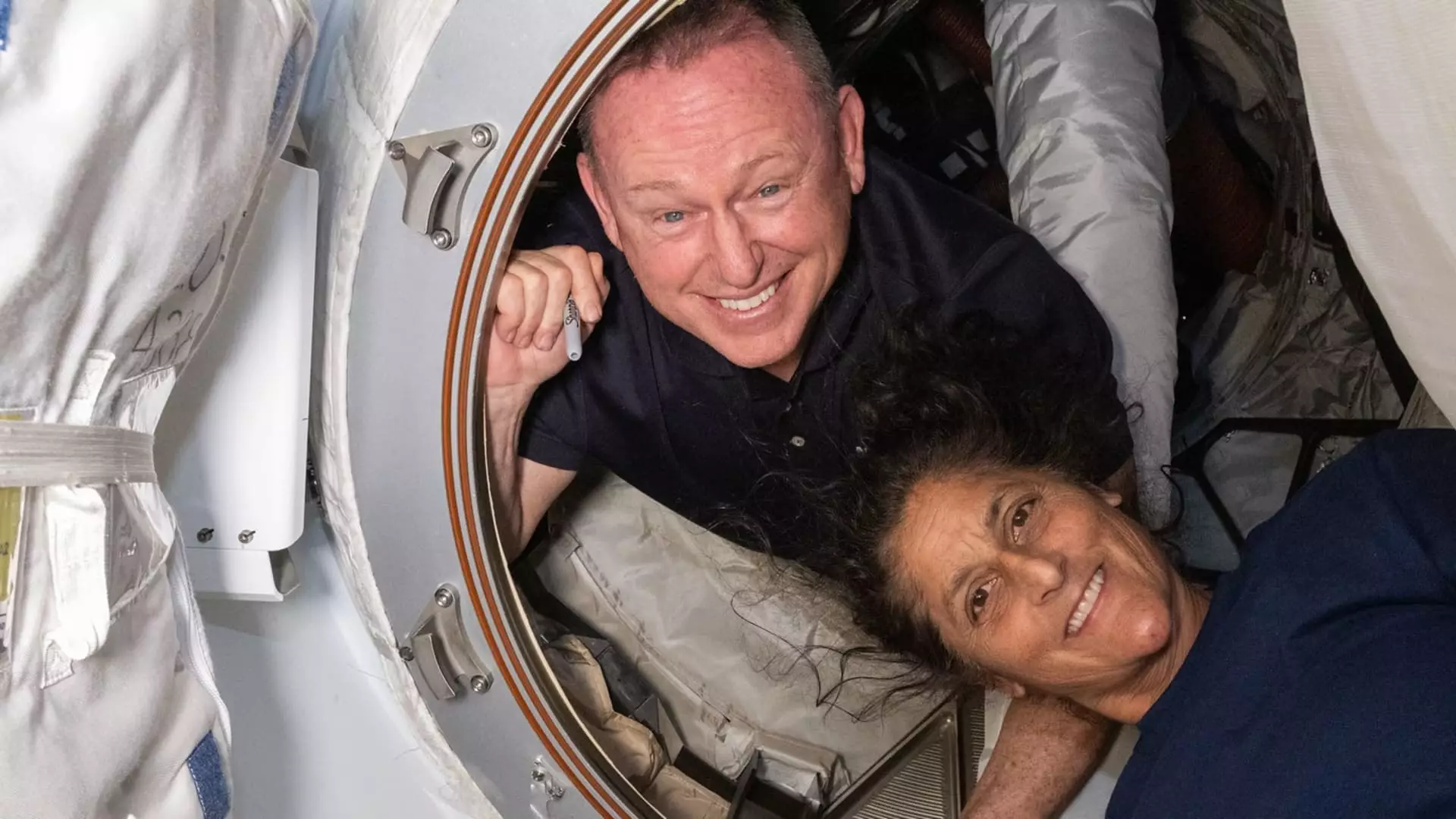The recent saga of NASA astronauts Butch Wilmore and Suni Williams reveals a troubling layer of mismanagement that has resonated deeply across the realms of space exploration and public trust. Initially launched in June, the duo’s planned nine-day expedition aboard the Boeing Starliner capsule went awry, leaving them effectively stranded at the International Space Station (ISS) for an extended nine-month period. The capsule’s thruster failures transformed a routine mission into a disconcerting narrative, casting serious doubt not only on Boeing’s technical capabilities but also on the efficacy of the agency meant to ensure astronaut safety. This incident showcases not just a technical failure, but a systemic problem within aerospace operations, particularly when Boeing appears more focused on corporate image than rigorous safety protocols.
The Politics of Space: Where Politics and Safety Collide
Adding a layer of complexity to this troubled voyage, the interplay of politics and space exploration should make us deeply concerned. Ex-President Donald Trump’s administration insinuated that Wilmore and Williams were “stranded” at the ISS due to the Biden presidency’s alleged inaction, publishing these sensational claims without any substantiated evidence. Consequently, the political narrative around the astronauts’ extended stay overshadowed the real issues—namely the shortcomings of Boeing’s technologies and its severe financial losses of over $2 billion on the Starliner project. This represents a significant deviation from NASA’s ideal of promoting scientific progress devoid of political partisanship. The political posturing surrounding space missions diminishes public trust, leading to an atmosphere of skepticism rather than the awe that space exploration should inspire.
The Ripple Effect: Calypso’s Failures Reverberating Through NASA
In an unforeseen twist, NASA’s operational plans had to adapt and bend, showcasing the precariousness of current spaceflight logistics. Wilmore and Williams were ultimately set to return home on a SpaceX Dragon spacecraft after two astronauts from Crew-9 had to be removed from their scheduled return for the sake of this bizarre twist of fate. The repercussions of Starliner’s malfunction illustrate a grave risk in relying on two competing companies. While competition can foster innovation, it can also aggravate exigencies if one company’s failures dramatically disrupt the schedule of another. The ramifications extend beyond a single mission; they foster a culture of uncertainty that could ripple through future operational planning across NASA and its commercial partners.
Experiments in Abandonment: Human Elements Overlooked
Throughout their extended duration aboard the ISS, both astronauts continued to perform their duties diligently, conducting scientific experiments and maintaining the intricate systems of the station. Yet, one cannot ignore the emotional toll such a prolonged return stint took on them. Williams herself emphasized that they didn’t feel abandoned, but this sentiment seems painfully inadequate when the gravity of their predicament is taken into account. This blurring of professionalism with personal sentiment illustrates a deeper issue: the emotional resilience human beings must cultivate in environments riddled with uncertainties and administrative failures. It beckons us to question whether the existing space operations adequately consider psychological well-being alongside technical and logistical efficiency.
Hurdles Ahead: Boeing’s Uncertain Future
While NASA’s plans for the astronauts remained steadfast, Boeing’s future in crewed space missions hangs by a thread. The company’s substantial public and financial losses raise pressing questions about their viability in competitive crewed spaceflight. Will they be able to recover from this debacle? The situation is dire, especially when the initial promise of dual suppliers—Boeing and SpaceX—was to offer redundancy and reliability. Starliner’s failures don’t just jeopardize Boeing’s future; they pose a significant risk to NASA’s strategic vision of diversified capabilities in space travel.
This entire episode should serve as a dive-light into the very fabric of our future endeavors to reach beyond our planet. The vision of exploring the cosmos juxtaposed against the petty politics and corporate miscalculations begs us to consider the human element, accountability, and, ultimately, the innocent lives that are thrust into a precarious orbit because of systemic failures. The future of space exploration may depend on how we address these critical issues today.


Leave a Reply